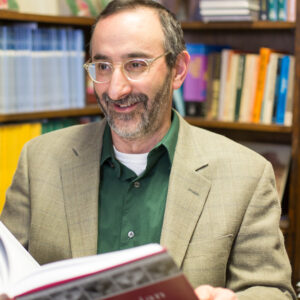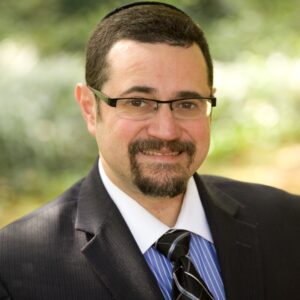
Separation and Union: The Poles of Holiness
May 5, 2017 By Stephen A. Geller | Commentary | Aharei Mot | Kedoshim
These combined parashiyot are complex in their structure and content, yet a careful examination of these chapters reveals a striking and powerful theological insight. In terms of Bible scholarship, they extend across a major divide in the priestly literature: Leviticus 16 describes the detailed rites of yearly atonement that eliminated the taint of sinfulness from the priesthood, shrine, and people. In essence, it is a kind of re-creation of the initial state of purity of the Tabernacle on the day it was dedicated, as described in Leviticus 9-10. The link between atonement and dedication is made subtly, by the reference at the beginning of Leviticus 16 to the tragic deaths of Aaron’s sons, Nadab and Abihu, at the dedication of the Tabernacle, as recounted in Leviticus 10.
Read More
Songs of Joy, Counterpoints of Tragedy
May 6, 2016 By Jonathan Lipnick | Commentary | Aharei Mot
Perhaps the Torah speaks now, in the spring of atonement, because we know so well our songs of joy carry with them counterpoints of tragedy.
Why should we be reading about Yom Kippur around the time Pesah is celebrated? These two holidays seem so different, and yet, in her poem “Aharei Mot,” Ruth Brin was on to something, leading me to wonder: How was I to understand the interrelationship between Yom Kippur and Pesah? How was I to take Ruth Brin’s instructive words to heart?
Read More
Where Is Authority Found?
May 6, 2016 By Benjamin D. Sommer | Commentary | Aharei Mot
People familiar with the dietary laws of Judaism know that meat from an animal that died a natural death or was torn apart by wild beasts is not kosher. This is stated explicitly in the Torah. Exodus 22:30 reads, “You shall be my holy people: you may not eat meat torn by beasts in the field; you should throw it to dogs.” (The Hebrew word for “torn by beasts”—terefah—refers specifically to torn flesh in biblical Hebrew.)
Read More
Let All Who Are Hungry Come and Eat
Apr 16, 2011 By Andrew Shugerman | Commentary | Text Study | Aharei Mot | Shabbat Hagadol
One of my favorite customs for Shabbat Hagadol is to read the Maggid section of the Passover Haggadah in advance of the first seder.
Read More
Explaining the Inexplicable?
Apr 20, 2002 By Ismar Schorsch | Commentary | Aharei Mot | Kedoshim
In speaking of the legal corpus which dominates this week’s double parashah, the Torah makes use of two terms, mishpatim and hukkim, translated as “rules” and “laws.” Technically, as Baruch A. Levine makes clear in his commentary, they reflect two sources of legal practice. The word mishpatim deriving from the root sh-f-t, “to judge,” embodies rules articulated in a judicial setting. Hukkim from the root h-k-k “to engrave” or “inscribe” suggests laws promulgated by decree. In our parashah the terms seem to be synonymous, because God is the only lawgiver: “My rules (mishpatim) alone shall you observe, and faithfully follow My laws (hukkim): I the Lord am your God” (18:4).
Read More
Mitzvah vs. Mitzvah
May 5, 2001 By Joshua Heller | Commentary | Aharei Mot | Kedoshim
Sometimes in the Biblical text, the first half and second half of a verse seem to be talking past each other. The first half addresses one commandment or concept, and the second half seems to go off on a tangent. This strange type of juxtaposition appears a number of times in K’doshim , the second half of our double portion for the week.
Read More
Love for All
May 9, 1998 By Judith Hauptman | Commentary | Aharei Mot | Kedoshim
This Shabbat we will read two Torah portions, Aharei Mot and K’doshim . The topics covered in these parashiyot range from the ritual requirement of sending a scapegoat out to the desert on Yom Kippur, to a list of forbidden sexual relationships, to fundamental social legislation, reminiscent somewhat of the Ten Commandments.
Read More
Our Neighbor’s Blood
May 1, 2004 By Melissa Crespy | Commentary | Aharei Mot
What’s in a translation? When the translation is of a verse in the Torah – there is potentially quite a lot. Therefore, in reading the Etz Hayim Humash’s translation of Leviticus 19:16, I was struck by its rather non-literal translation of Lo ta-a-mod al dam ray-ekha. In the context of surrounding verses concerning fair and just treatment of others, Etz Hayim translates our verse: “Do not profit by the blood of your fellow”, and the commentary on the verse tells us that, in context, the verse seems to mean: “Do not pursue [your] livelihood in a way that endangers another or at the expense of another’s well-being.” (p. 696) This translation and commentary do seem to fit the context of the surrounding verses.
Read More


